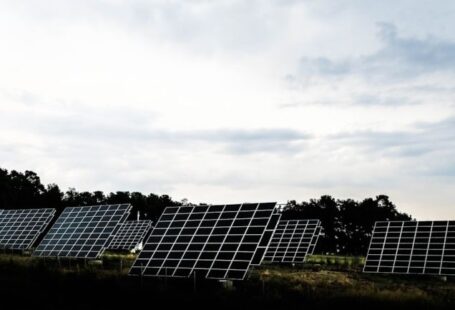Solar energy has been gaining momentum as a clean and sustainable source of power in Indonesia. With its abundant sunlight, the archipelago has vast potential for solar energy generation. Over the years, the design of solar panels has evolved significantly to increase efficiency, durability, and affordability. This article will delve into the evolution of solar panel design in Indonesia, exploring the key advancements that have shaped the industry.
**Harnessing Solar Energy in the Archipelago**
Indonesia, with its equatorial location, receives ample sunlight throughout the year, making it an ideal location for solar energy production. The government has recognized the importance of renewable energy sources in reducing reliance on fossil fuels and addressing climate change. As a result, there has been a growing emphasis on solar power projects across the country.
**Traditional Solar Panel Designs**
In the early stages of solar energy adoption in Indonesia, traditional solar panel designs were predominant. These panels were bulky, rigid, and often had limited efficiency in converting sunlight into electricity. Moreover, the high costs associated with importing solar panels hindered widespread adoption among residential and commercial users.
**Advancements in Thin-Film Technology**
One of the key breakthroughs in solar panel design in Indonesia has been the adoption of thin-film technology. Thin-film solar panels are lightweight, flexible, and more cost-effective compared to traditional crystalline silicon panels. This innovation has enabled more versatile applications of solar panels, such as integrating them into building materials and portable solar devices.
**Integration of Bifacial Solar Panels**
Another notable development in solar panel design is the integration of bifacial solar panels. These panels can capture sunlight from both the front and back surfaces, increasing energy yield and efficiency. The ability to generate electricity from reflected light has made bifacial solar panels a popular choice for installations in Indonesia, where sunlight is abundant.
**Innovations in Solar Panel Mounting Systems**
Alongside advancements in solar panel technology, there have been innovations in mounting systems to improve the efficiency and durability of solar installations. Adjustable mounting systems allow for optimal positioning of solar panels to maximize sunlight exposure throughout the day. Moreover, corrosion-resistant materials have been introduced to withstand Indonesia’s tropical climate and coastal locations.
**Local Manufacturing and Research Initiatives**
To further drive the evolution of solar panel design in Indonesia, there has been a push towards local manufacturing and research initiatives. By producing solar panels domestically, the country aims to reduce costs, create jobs, and enhance technological capabilities. Research collaborations with universities and research institutions have also contributed to the development of next-generation solar technologies.
**The Future of Solar Panel Design in Indonesia**
As Indonesia continues to embrace solar energy as a key component of its renewable energy mix, the future of solar panel design looks promising. Innovations in materials science, energy storage, and smart grid technologies are poised to revolutionize the solar industry. With a concerted effort towards sustainability and innovation, Indonesia is on track to become a leader in solar energy deployment in the region.
**In Summary**
The evolution of solar panel design in Indonesia has been marked by significant advancements in technology, manufacturing, and research. From traditional solar panels to thin-film technology and bifacial panels, the industry has come a long way in improving efficiency and affordability. With a focus on sustainability and innovation, Indonesia is poised to harness its abundant sunlight for a brighter, cleaner energy future.





